Sheldon Simeon’s Huli Huli Chicken
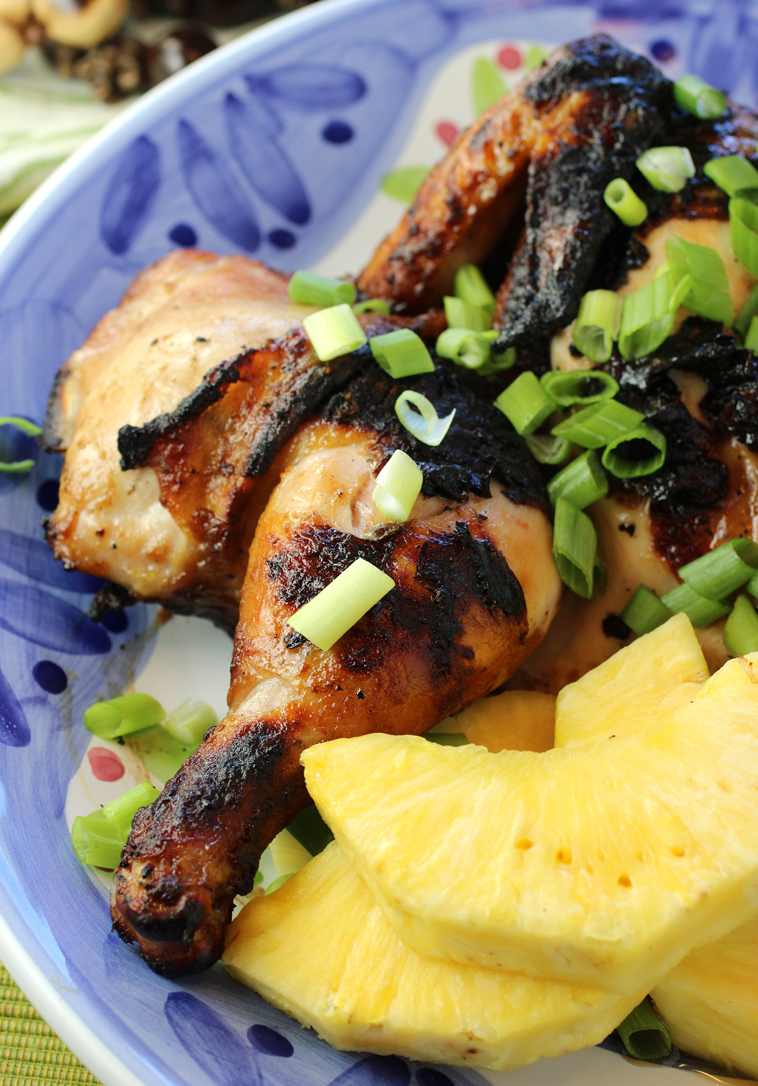
If ever there was a dish to help prolong summer, it’s huli huli chicken.
Ubiquitous in Hawaii, where it’s a staple of food trucks and roadside stands, this flavorful grilled chicken can’t help but transport you to sun, surf, and sand.
There’s no better version to try making at home than the one by favorite Hawaiian son and “Top Chef” Fan Favorite not once, but twice, none other than Chef Sheldon Simeon, owner of Tin Roof and Tiffany’s, both in Maui.
His “Huli Huli Chicken” recipe is from his cookbook, “Cook Real Hawaii” (Clarkson Potter, 2021), written with Los Angeles food writer Garrett Snyder.
“Huli” means turn in Hawaiian, and that’s what you do with this chicken as it cooks on the grill. Just be sure to keep a close eye on the heat of your grill, as the sugar in the glaze will mean your chicken will char easily, as, ahem, my husband found out. Even if the skin gets rather ebony in parts, it will still taste fantastic.

That’s because the glaze is made up of butter, chicken stock, oyster sauce, brown sugar, pineapple juice, ginger, garlic, scallions, and sesame oil that all gets simmered first to thicken and concentrate its flavors.
Instead of buying canned pineapple juice, I just bought a fresh pineapple and blitzed a few slices in the blender. The bonus is you are left with a lot of fresh pineapple to enjoy alongside this dish.
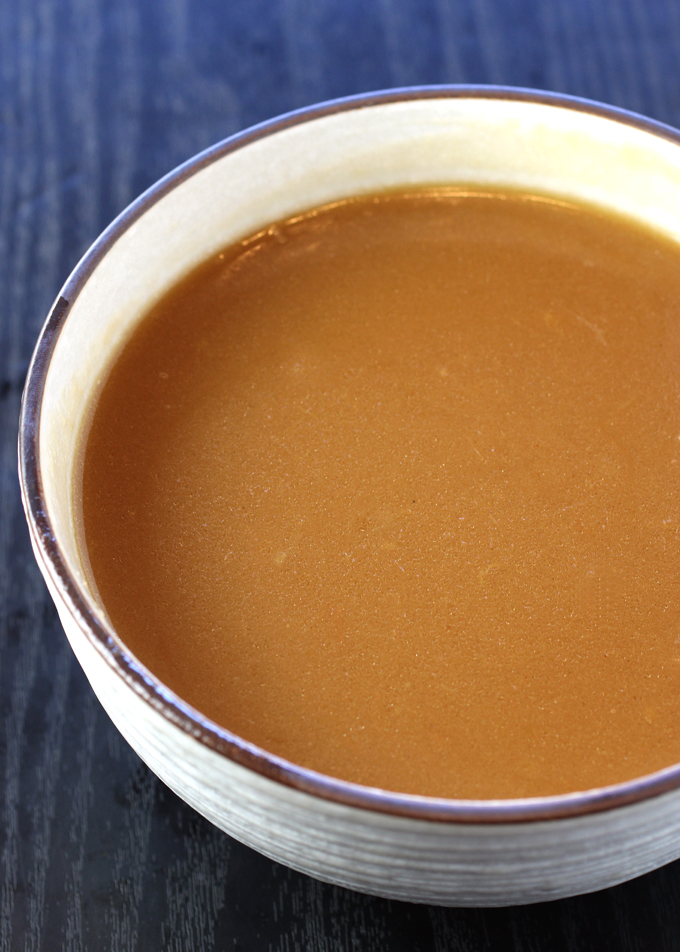
The day before cooking the chicken, spatchcock it and rub it all over with shio koji before refrigerating. Shio koji is rice inoculated with a specific mold commonly used to make soy sauce and miso, then mixed with water and salt, and left to ferment. It’s available in the refrigerator section of Asian markets in whole rice grains, pureed or liquid. If all you can find is the whole grains, just whirl in a blender or food processor until pureed.
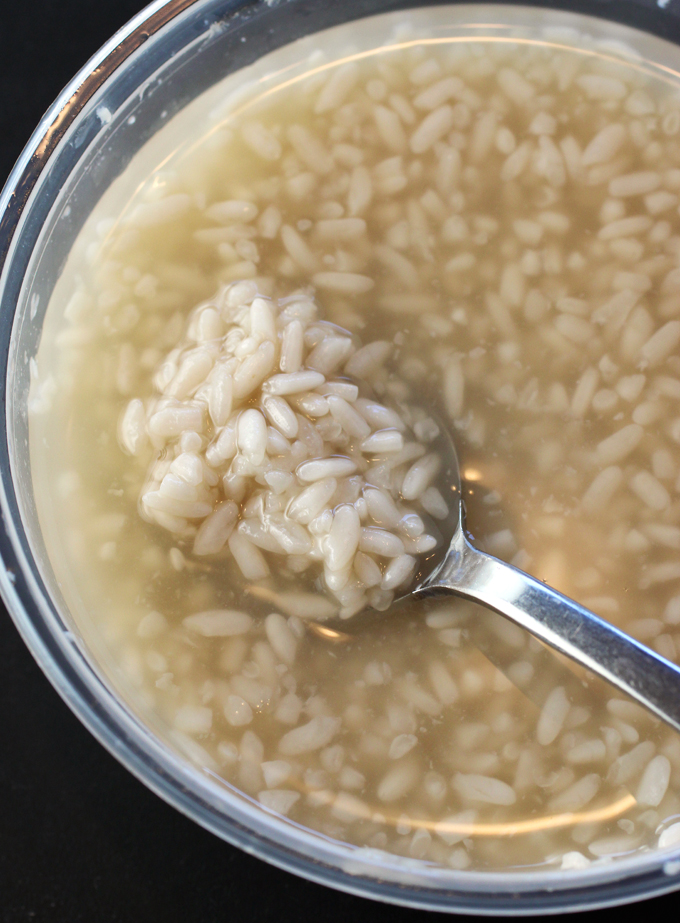
The shio koji acts like a salt brine by tenderizing proteins. It also adds a jolt of savoriness.
When ready to cook, rinse off any residual shio koji from the chicken, pat dry, sprinkle garlic salt all over, place on the grill, and brush with the sauce a few times.
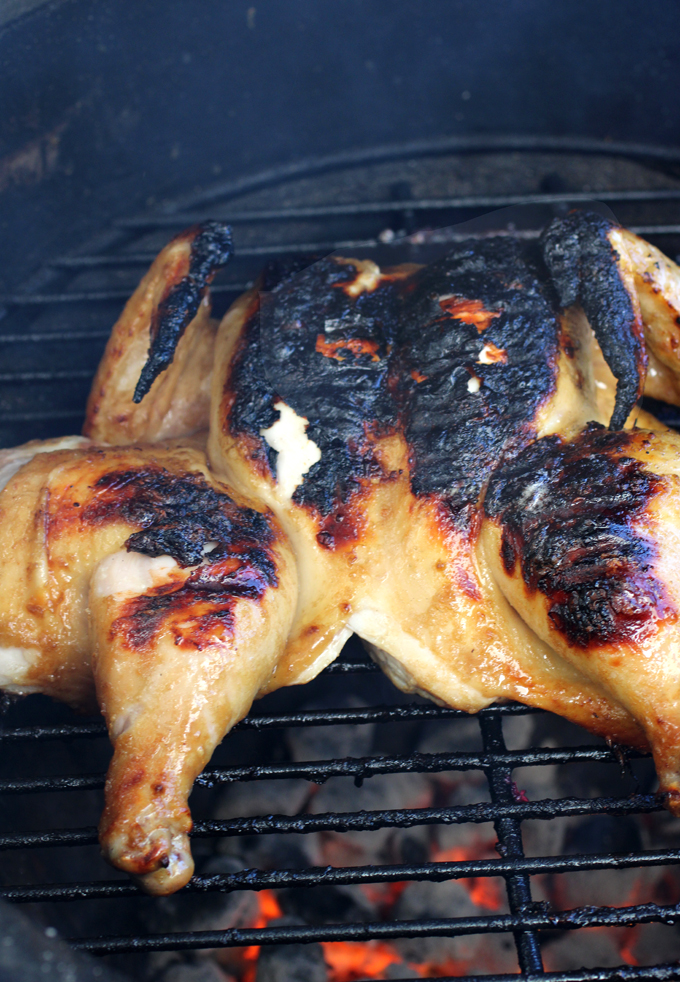
You can boil any remaining glaze on the stovetop to then use as a sauce at the table. Or you can just divvy up the sauce at the start allocating some to be brushed on the raw chicken as it cooks and leaving the rest untouched in a separate container for serving.
The chicken couldn’t be juicier. The glaze is like a cousin to teriyaki — similar enough to be related but really its own individual self. It doesn’t have the familiar soy sauce punch that teriyaki has. Instead, it’s tangy-sweet, savory, and sassy in a different way. The garlic and ginger are heady, adding big flavor in every bite.
Who says summer has to end? Not with this chicken, it doesn’t.
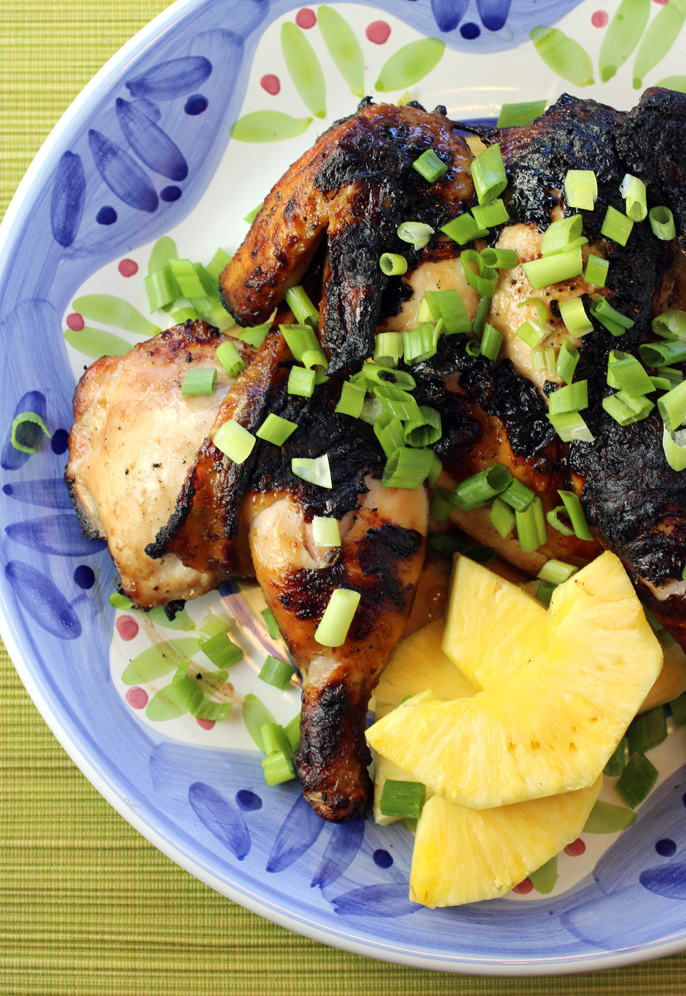
Huli Huli Chicken
(Serves 4)
1 whole chicken (3 to 4 pounds), spatchcocked (see Note)
1/2 cup shio koji paste
3 cups chicken stock
8 tablespoons (1 stick) salted butter
2 tablespoons oyster sauce
1/4 cup pineapple juice
1/4 cup packed light brown sugar
4 ounces ginger, sliced and crushed
6 cloves garlic, crushed and peeled
2 tablespoons toasted sesame oil
12 scallions, white and green parts separated, greens roughly chopped
1 tablespoon cornstarch
Garlic salt
Oil, for the grill
Place the chicken on a large sheet pan and rub all over with the shio koji. Cover loosely with parchment paper and refrigerate overnight.
In a saucepan, combine the chicken stock, butter, oyster sauce, pineapple juice, brown sugar, ginger, garlic, and sesame oil. Crush the white parts of the scallions with the butt of a knife and add those, too. Bring this to a boil, then reduce the heat and simmer for 30 minutes, stirring occasionally, or until the liquid has reduced by about half. Remove the ginger, scallions, and garlic using a slotted spoon.
In a small bowl, mix the cornstarch with 2 tablespoons water to make a slurry. Stir into the sauce, and increase the heat to bring back to a boil before removing from the heat.
An hour before you’re ready to cook, remove the chicken from the fridge and let it come to room temperature.
When you’re ready to cook the chicken, rinse off the shio koji and pat the chicken dry with a paper towel. Season the chicken lightly and evenly with garlic salt.
Preheat a grill to medium-hot. Using tongs, oil the grates of the grill with an oiled rag or paper towels. Set up the grill for two-zone cooking: If using coals, push them off to one side of the grill so you can have direct and indirect heat. If using gas, reduce the heat to low on one side of the grill.
Place the chicken, breast-side up, on the cooler side of the grill. Cover and grill for 10 minutes. Uncover, brush the chicken with sauce, cover, and grill another 10 minutes. Uncover, glaze the chicken again, then flip the chicken breast-side down onto the hotter part of the grill. Cook over direct heat, uncovered, until the skin begins to brown and char slightly, about 10 minutes, then brush with sauce and flip the chicken breast-side up, still over direct heat. Brush the breasts with sauce and continue cooking the chicken over direct heat until the juices run clear or a thermometer inserted into the breast reads 160 degrees (plan for about 40 minutes total cook time). Remove the chicken from the grill and let rest for 15 minutes.
Meanwhile, bring any remaining sauce to a boil (if the sauce is broken, don’t worry, it will emulsify when it boils). Remove from the heat and let cool slightly. Slice the chicken and serve topped with some more sauce and the chopped scallion greens.
Note: The easiest way to spatchcock a chicken is to have your butcher do it. Otherwise, use a sharp pair of kitchen shears to cut along both sides of the chicken’s backbone (spine), separating it from the ribs. With the backbone removed, turn the bird over so the breast is facing up. Splay out the legs and breasts until they lie flat and give the bird a firm press in the center of the breast; you may hear a crack, and it should like flat on its own.
From “Cook Real Hawaii” by Sheldon Simeon with Garrett Snyder
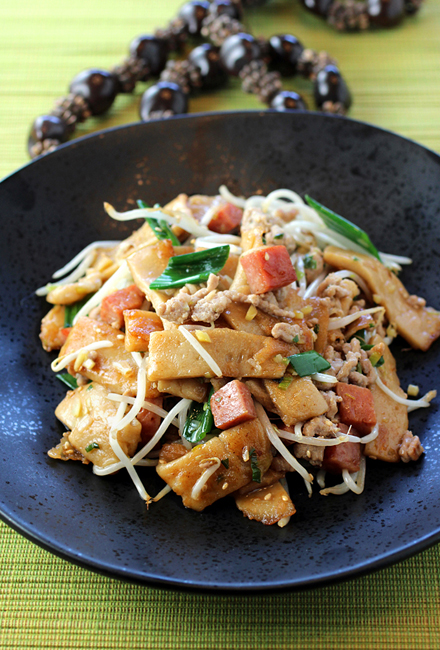
Another Sheldon Simeon Recipe to Enjoy: Lahaina Fried Soup (Fat Chow Fun)
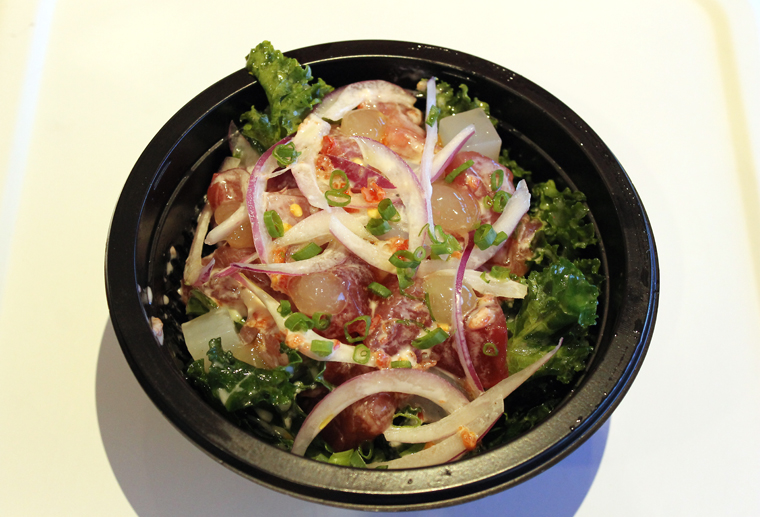
Plus: A Visit to Sheldon Simeon’s Tin Roof Restaurant
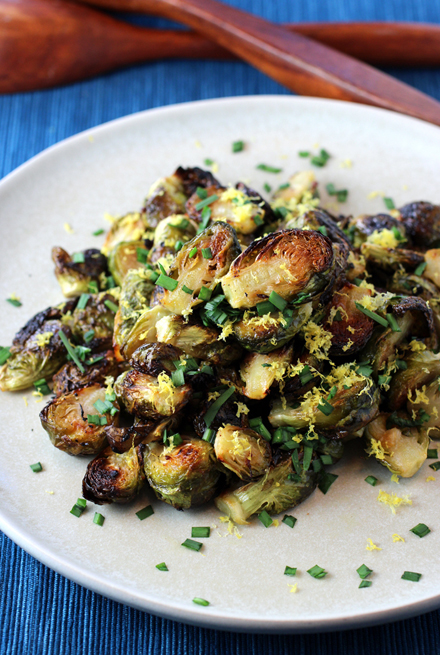
And Another Recipe to Try: Shio Koji-Roasted Brussels Sprouts

I’ve had this dish, but never made it myself. I will, though — what a terrific looking recipe! So nice — thanks.
Hi John: Yes, it’s super easy to make at home. So, you can enjoy a taste of Hawaii anytime. 😉